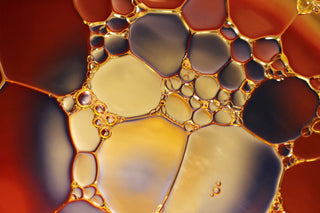CBDa? No, that’s not a typo.
Are CBD and CBDa two different things? Yes. But, also no. The world of cannabinoids is a complicated one, but it’s important to educate yourself nonetheless. We’ve got you. We’re explaining the difference between CBD and CBDa below!
What is CBDa?
CBDa is just one of 100+ known cannabinoids in the cannabis plant.
All cannabinoids (found in cannabis and hemp plants) come from cannabigerolic acid (CBGa). Natural enzymes found in the plant convert the CBGa into one of the three main cannabinoid compounds, depending on the unique strain:
- tetrahydrocannabinolic acid (THCa)
- cannabichromenic acid (CBCa)
- cannabidiolic acid (CBDa)
During the processing, the plant is cut, dried and activated by heat–turning the cannabidiolic acid (CBDa) into cannabidiol (CBD). Basically CBDa is just the raw, unheated form of CBD–the parent compound of CBD.
Because of the complicated history and legal status of hemp, CBDa was overlooked for a long time while the spotlight was on THC and CBD. But now, researchers are becoming more and more interested in the potential benefits of CBDa.
What are the Benefits of CBDa?
While we know that CBDa and CBD are very much the same, they actually affect your body in slightly different ways. CBDa seemingly doesn’t bind to your body’s cannabinoid receptors the way that CBD does.
However, CBDa does work with your endocannabinoid system (ECS). This complex system can be supported by both CBD and CBDa in the following ways:
- Recent studies show that CBDa acts as a “COX-2 inhibitor,” making it a great solution for pain and inflammation.
- CBDa reportedly helps with nausea, vomiting, and loss of appetite.
- Studies also suggested that CBDa interacts with the 5-HT receptors the same way that antidepressant medication or SSRIs do, showing lots of promise for symptoms of depression and anxiety.
Since science has lots of catching up to do when it comes to the hemp plant, we’re expecting more benefits of CBDa to be unearthed in the future. But in the meantime, we know that CBD offers the same benefits, with more clinical research available.
The best approach is to use broad spectrum CBD in tandem with other cannabinoids. These compounds tend to work overtime when they’re combined, boosting each other’s effects through what’s known as the “entourage effect.”
The Main Differences Between CBDa and CBD
- Availability: Unlike CBD, it’s pretty rare to find CBDa products. Most hemp that’s grown in the US is mostly for the sole purpose of making a CBD product. Since there hasn’t been a ton of research done on cannabidiolic acid, most farms are focusing on what we do know: that CBD is proven safe and effective.
- Dosing Methods: Since CBDa is found in raw cannabis leaves and flowers, chewing on the leaves is the most organic way to consume CBDa. Since this isn’t really that appetizing or sustainable, many people opt for the byproduct (CBD) instead–which is tastier and easier to dose.
Stay in Your Magic with CBD and CBDa
We get it: it’s easy to get lost in the busyness of daily life, and the many distractions that make it harder to connect with yourself. That’s why we launched Selene.
All of the ingredients we use in our CBD products have been intentionally chosen for purity, efficacy, and potency. We fully stand behind our products–we even use them ourselves on the daily!
If you have any questions, feel free to reach out to our team, or check out some of our other blogs about CBD:


